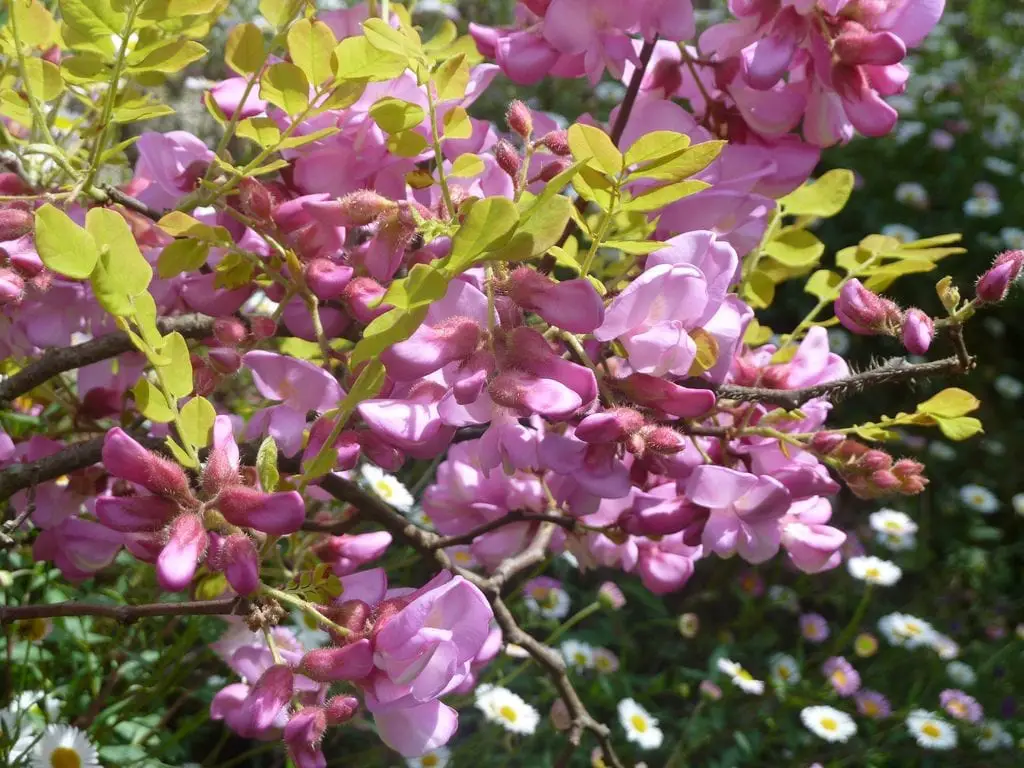
The hispid robins It is a marvel: it is not as tall as other trees, it produces very pretty flowers and it is also resistant to cold and frost. Its maintenance is therefore very simple, suitable for beginners.
So if you are looking for a tree that looks more like a bush that can give you many and great satisfactions, do not hesitate: give this species a chance. Discover it.
Origin and characteristics

Image – Davesgarden.com
Our protagonist is a shrub or deciduous tree native to the scrubland of the southeastern United States whose scientific name is hispid robins. It is popularly known as pink wattle, pink wattle, or false pink wattle. It grows to a maximum height of 6 meters, and has a wide crown about 3 meters in diameter.. The leaves are pinnate with up to 13 leaflets, and its flowers are borne in hanging clusters of pink or purplish color. The fruit is a plant pod.
There are at least 5 varieties:
- fertility
- dirty
- Kelseyi
- girl
- Rosea
Uses
Apart from being used as an ornamental, it has other uses:
- Medicinal: the root for toothache, and infused with leaves as a tonic.
- Wood: to make fences, ties and is also used in the construction of houses.
What are their cares?

If you want to have a copy of hispid locustswe recommend that you provide the following care:
- Location: it must be outside, in full sun.
- Earth:
- Pot: universal growing substrate.
- Garden: grows in all types of soils.
- Irrigation: about 3 irrigations a week will be enough in the hottest season, and every 4 days the rest.
- Subscriber: from the beginning of spring to the end of summer it can be paid with guano for example.
- Multiplication: by seeds in spring.
- Pruning: at the end of winter dry, diseased or broken branches must be removed.
- Rusticity: it resists cold and frost down to -12ºC, but cannot live in climates without frost.
What did you think of hispid locusts?

